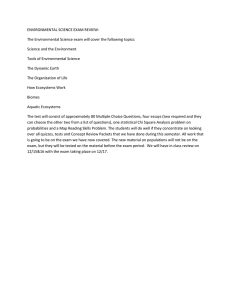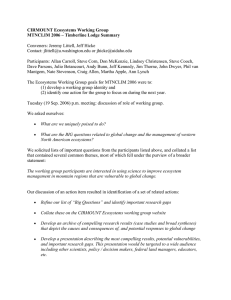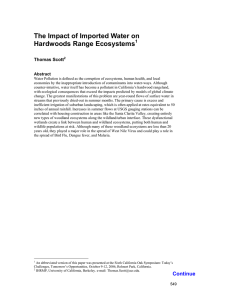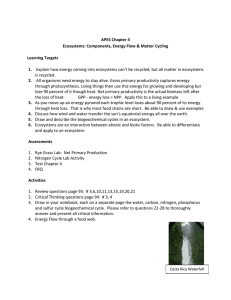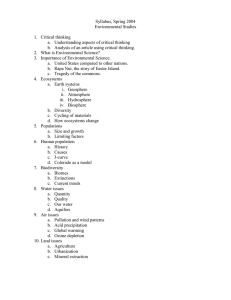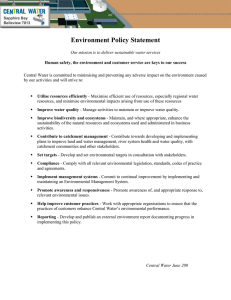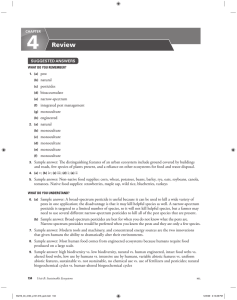4.8: City Life pg. 148 1. Urban ecosystems depend on natural
advertisement
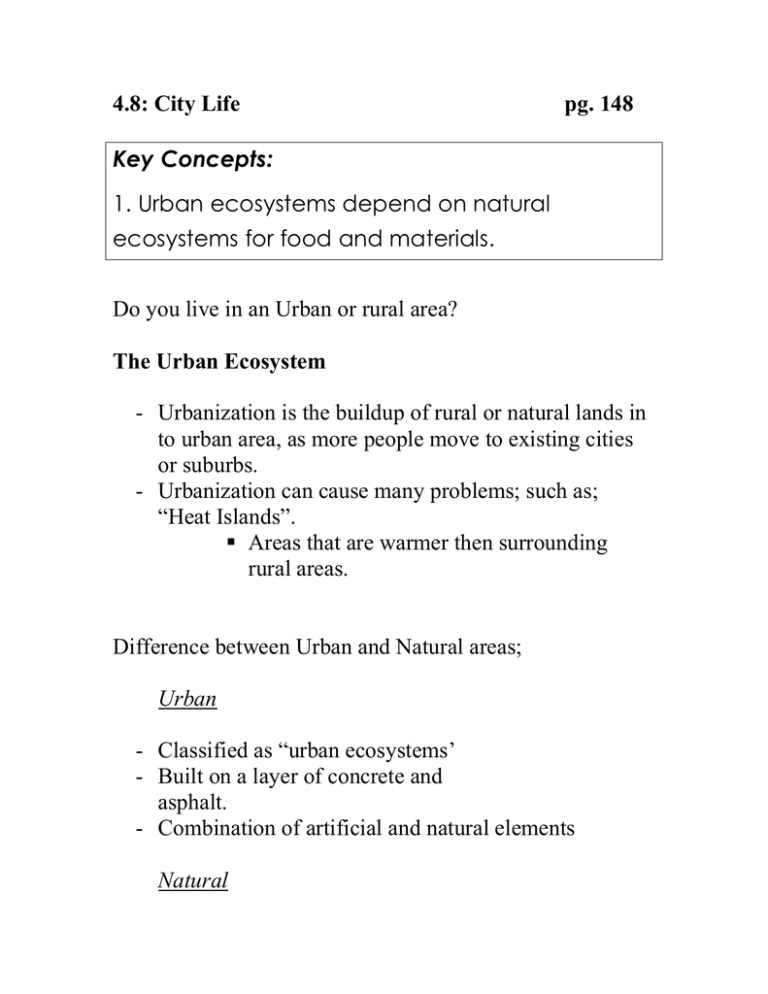
4.8: City Life pg. 148 Key Concepts: 1. Urban ecosystems depend on natural ecosystems for food and materials. Do you live in an Urban or rural area? The Urban Ecosystem - Urbanization is the buildup of rural or natural lands in to urban area, as more people move to existing cities or suburbs. - Urbanization can cause many problems; such as; “Heat Islands”. Areas that are warmer then surrounding rural areas. Difference between Urban and Natural areas; Urban - Classified as “urban ecosystems’ - Built on a layer of concrete and asphalt. - Combination of artificial and natural elements Natural - have living carpets of grass, trees and other plants. . - In cities most of the natural vegetation has been replaced with human structures. - Roads, sidewalks, and buildings - Limited plant life; parks with grasses and trees, usually monocultures - Natural water and nutrient cycles are places with sewers and waste treatment plants. Tables 1: Comparison of Urban and Natural Ecosystems. Greener Cities Ecological Footprint: is a measure of the land area required to sustain a given population of humans. Case Study: Vancouver, British Columbia Case Study: Iqaluit, Nunavut Check Your Learning: Questions 1 – 6, pg. 151 Wrap Up: - Urban areas are places in which homes and other buildings are crowded together, with little open space. - People who live in urban areas rely on outside ecosystems for most of their resources. - Living in urban ecosystems can benefit the environment because many people living close together can reduce consumption of energy, resources, and space. - A city becomes more green, as it reduces its impact on the environment. Chapter 4 Summary 1. Some ecosystems are designed, created, and maintained by humans - Some humans spend little time in natural ecosystems. - Humans can change natural ecosystems, but we cannot change our dependence on them. - A farmland is an engineered ecosystem. 2. Agricultural practices disrupt natural biogeochemcial cycles. - On a farm, a limited number of species interact. - Humans must manage the water and nutrient supply for farms. - Farmers commonly apply fertilizers to replace soil nutrients. 3. It is important to keep Earth’s soil healthy. - The four main parts of soil are minerals, organic matter, air, and water. - Soil health depends on the amount and availability of nutrients. - Fertilizers are beneficial but can create problems for the environment. 4. Pesticides are used to reduce crop losses due to insects, weeds, and other pests. - There are no “pest” in nature. There are simply producers, consumers, and decomposers. - Most pesticides are poisons that control or eliminate pests. 5. Pesticides have ecological costs. - Pesticides can pollute the soil, air, ground water, and aquatic ecosystems. - Pesticides can harm organisms that are not the intended target. - Some pesticides build up in the bodies of individual organisms and move up through the food chain. 6. Urban ecosystems depend on natural ecosystems for food and materials. - Urban ecosystems combine artificial and natural elements. - In a large city, most of the natural vegetation is replaced by human structures.
